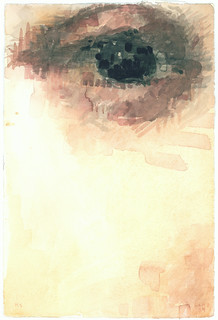 |
| Visitor participating of the Micro-world workshop at the Exploratory Science Museum of Unicamp. |
It seems harder to show so intriguing performances when we need to explain the underlying scientific process. Most amazing scientific results can be complex and hard to explain and we are tempted to stay only in the amazing results. This is a challenge, especially in a science museum like the one where I am working1, because visitors are expecting to "play funny things".
We must consider that an amazing performance presenting scientific results, in which the spectators do not understand what happens behind the scenes, could have an effect equivalent to a magic performance. Is this the impression that we want to transmit?
What is the role of our approach to present science in the way that people see and criticize science today? This question can be extended also to the way we teach science.
There is no doubt that exhibitions and museums of science have a broader role, offering an opportunity to know the world through the lens of science. But the question is how much we are working to avoid the dissociation of this task from the scientific literacy.
Scientific literacy expresses the ability of critical and autonomous thinking about science, its discoveries and results. It includes the capacity of interpreting facts and data, of understanding the scientific process, its characteristics, qualities, and limitations. It also expresses the capacity in perceiving how science and the scientific knowledge can help us to know the world and in day-to-day decisions. Scientific literacy would be treated as the bridge to know the world through the lens of science.
Even being aware of this challenge, I have realized how much I was unprepared to face it when I started the endeavor of presenting science to visitors of the museum. This collection of essays that I call Science Components address questions in this context. They result from practical experiences, interactions, and debates with colleagues of science and of the museum.
1. The author of this blog is, at the writing date of this post, educational director of the Exploratory Science Museum of Unicamp (University of Campinas).









